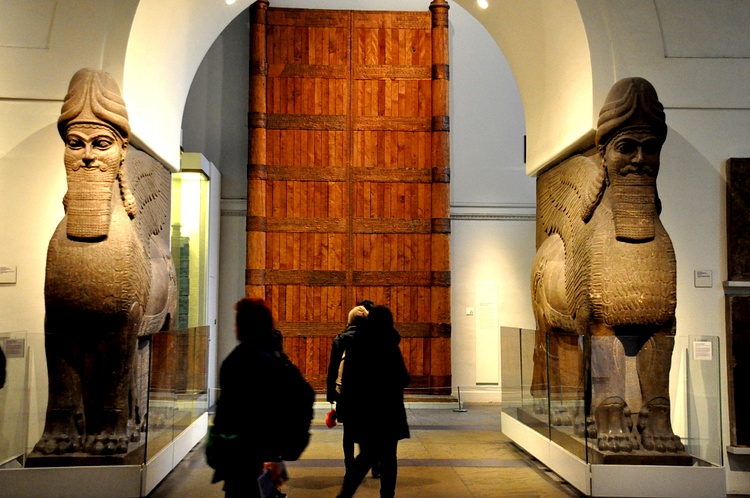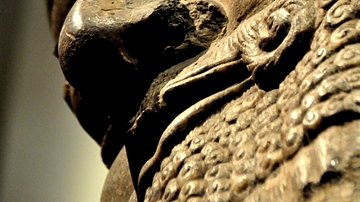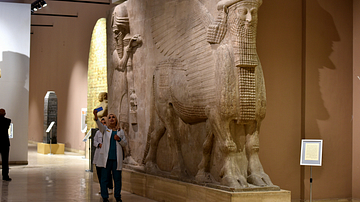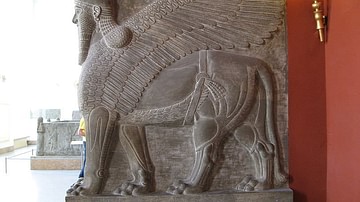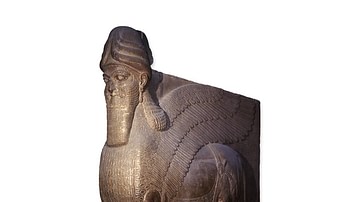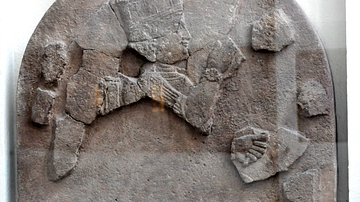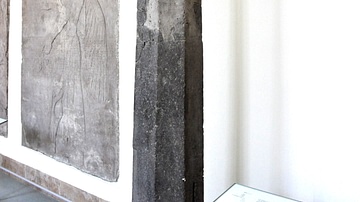Server Costs Fundraiser 2024
Illustration
This is a pair of guardian figures (winged human-headed lions) that flanked one of the entrances into the throne room of Ashurnasirpal II (883-859 BCE). Stone mythological guardians, sculpted in relief or in the round, were often placed at gateways to ancient Mesopotamian palaces, to protect them from demonic forces. They were known to the Assyrians as lamassu. This winged lion has five legs so that when viewed from the front it is standing firm, and when viewed from the side it appears to be striding forward against any evil. It wears ropes like other protective spirits. Between the legs is inscribed the "Standard Inscription" of Ashurnasirpal II which is repeated over many of his reliefs. It records the king's titles, ancestry and achievements.
Nimrud (ancient Kalhu), north-west palace, room B, door a, panel 2. Neo-Assyrian era, 883-859 BCE, Mesopotamia, Iraq. (The British Museum, London)
About the Author
Cite This Work
APA Style
Amin, O. S. M. (2014, February 06). Lamassu from Ashurnasirpal II Palace. World History Encyclopedia. Retrieved from https://www.worldhistory.org/image/2295/lamassu-from-ashurnasirpal-ii-palace/
Chicago Style
Amin, Osama Shukir Muhammed. "Lamassu from Ashurnasirpal II Palace." World History Encyclopedia. Last modified February 06, 2014. https://www.worldhistory.org/image/2295/lamassu-from-ashurnasirpal-ii-palace/.
MLA Style
Amin, Osama Shukir Muhammed. "Lamassu from Ashurnasirpal II Palace." World History Encyclopedia. World History Encyclopedia, 06 Feb 2014. Web. 27 Jul 2024.

